How To Save A Peace Lily That Got Too Cold?
Peace lilies are low-light tolerant houseplants and are popular among plant lovers for their eye-catching white blossoms and bright green foliage. But what to do if your peace lily has been subjected to extreme cold conditions?
How to save a peace lily that got too cold? Let’s find out.
If your peace lily suffered due to a sudden drop in temperature, then you need to act immediately to save them. First, move the plant into a warm area with temperatures above 70°F and bright indirect lighting conditions. Now trim back the wilting leaves and water the plant as usual.
An early frost or too much cold can harm them severely. Damage caused by cold drafts and frost can be fatal for the peace lilies. However, recovery is possible but not guaranteed.
This article will take you through few practical measures to save your favorite peace lily from the effect of cold. To know more, let’s dive into this article.
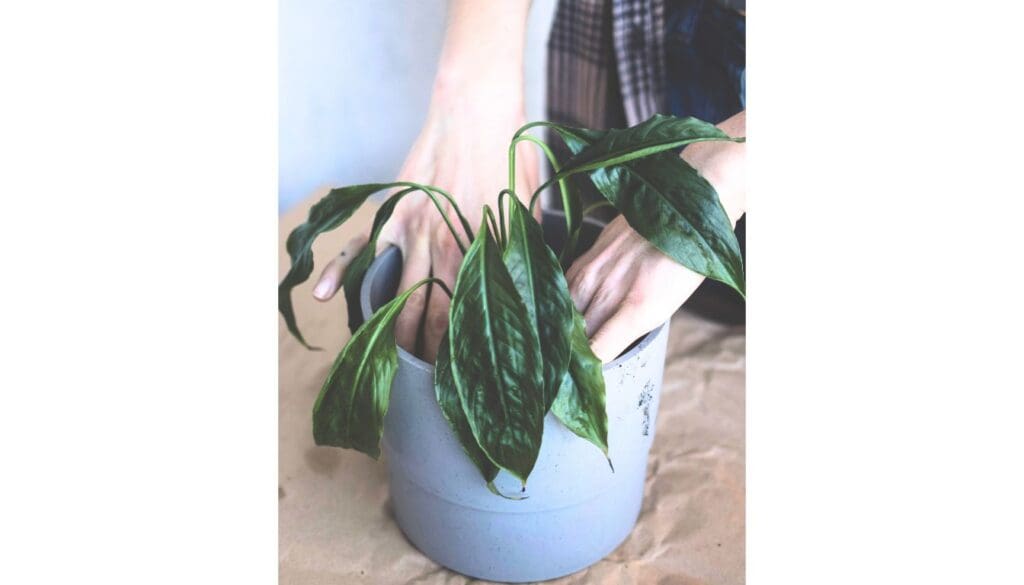
Please note: Simplify Plants is reader-supported. Some links in the post are affiliate links and I get a commission from purchases made through links in the post.
What is the lowest temperature a peace lily can tolerate?
The lowest temperature that a peace lily can tolerate is 45°F, and it cannot tolerate lower temperatures than that.
Peace lilies are not cold-tolerant plants. These tropical plants prefer warm conditions, and you cannot expose them to freezing temperatures, freezes, or cold drafts.
A peace lily requires special attention and extra care during winter when the temperatures go low. If you cannot provide that, you will notice many damages and diseases in your peace lily.
Signs of a peace lily that got too cold
A slight drop in the temperature (40-55°F) will not severely affect the peace lily, but the growth will slow down. Further decrease in temperature can create severe health complications, even wilting.
Here are some signs of a peace lily that got too cold.
- The first sign of damage from cold is mainly exhibited in the leaves. The leaves start turning black and eventually dry out completely.
- The blacking or drying outspreads to the inner parts of the plant.
- The plant becomes droopy, and leaves become wilted.
- Older leaves become affected first. A dark margin is noticed around the leaf. Dead or necrotic tissues become black.
- Roots and stems also get affected. If the root system gets frozen, it is almost an irreversible issue. Generally, such a phenomenon leads to fatal consequences.
The intensity of damage depends on many factors, like:
- Age and size of the plant.
- Maturity of the leaves.
- Duration of cold.
Some hybrid species of peace lilies are relatively more cold-resistant than the others.
Species like “Annette”, “Debbie,” and “Viscount” experience less than 5% damage on the leaf surface when they are subjected to 38°F, whereas other species, including “Vicki Lynn,” “Mini” experience over 50% of leaf damage.
Will a peace lily come back after a freeze?
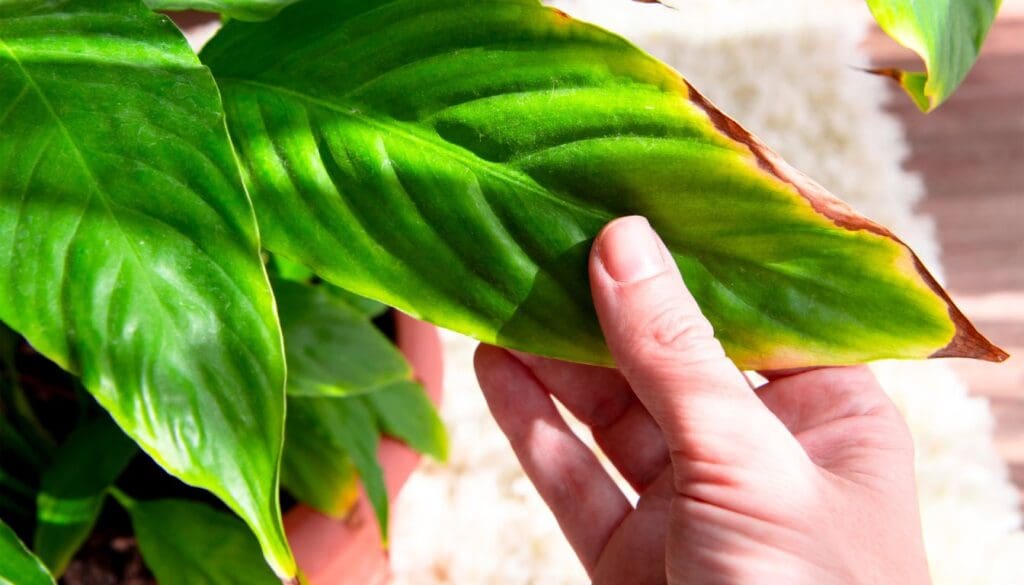
Peace lilies can tolerate temperatures between 45-55°F, but anything below that will become a problem for these plants.
Temperatures below 40°F can cause severe damage and can lead to the death of the peace lily plant. Whether it will come back after a freeze depends on the amount of damage it underwent.
How do I revive my peace lily that got too cold?
Adapting a proper frost treatment for peace lily depends on the degree of damage.
- Remove damaged leaves: The treatment begins with the removal of dried-out or dead leaves. Also, clip off the leaves that are partially brown or yellow. This will allow the plant to restore energy for resuscitation.
- Cutaway base flowers: Clip off any flowers from the base of the flowering stems. It is an essential step in reviving the plant from the cold by focusing its energy on recovery.
- Maintaining the temperature: If your plant is experiencing mild to moderate damage, taking rapid precautions may help it out. The foremost part is to keep your plant at a favorable temperature. Keep the plant in a well-insulated room to provide adequate warmth.
- Watering the plant: Winter is generally a dry season with less moisture content in the air. If you witness a droopy plant and dried-out topsoil, apply room temperature water until the soil is thoroughly moistened.
Remember to empty the saucer under the pot, and the roots must not sit in water as they become more susceptible to root rot during winter.
- Adjust the lighting: Keep your plant immediately away from the open windowpane if you witness any damage from cold, as peace lily will not require as much light during winter.
- Adequate humidity: The dry climate during winter sends the plant species to a dormant state. Adequate humidity is required for plants that are already suffering frost damage. You can install a humidifier to increase the relative humidity. It will enhance the rate of recovery by inducing physiological processes in the plant.
You can group your plants to allow moisture exchange between them through transpiration. Misting must be done to the sick plants twice or thrice a week.
You need to understand one thing, recovery of your peace lily from frost damage or extreme cold entirely depends on the amount of damage. If 50% of your plant’s leaves are affected, it’s better to leave hope for its revival.
As chilled plants slow down their growth, you need to have patience with your sick peace lily. After moving your plant to a warmer spot, observe it regularly. You can find green buds on the crown, fleshy base at the soil line if it recovers naturally.
Care for peace lily during cold weather
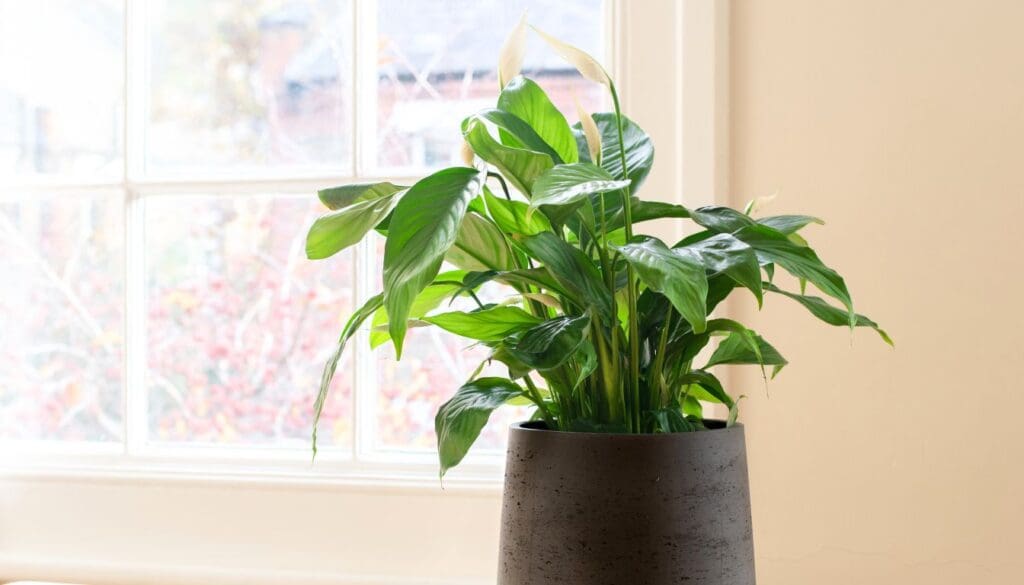
The delicate white blossoms of peace lily are the true epitome of beauty.
If you want your peace lily to remain in a healthy and happening state, try to follow the following tips, especially during the winter season.
- As Spathiphyllum are tropical plants, they do best at temperatures above 60-70°F. Try to keep your plants between a temperature range of 45-65°F at least to provide adequate life support.
- If you reside in a freezing zone, maintain a proper insulating system at your house, especially in the room where you keep your peace lily.
- Peace lilies can tolerate short periods of dry soil, but delaying too much will complicate their health even in winter when water requirements are low. Don’t plan a watering schedule. The best way is to check the soil and understand the water need.
- Peace lilies are humidity-loving plants. Low humidity during the cold season is harmful to the plants as it increases the rate of transpiration. To keep your plant fresh and prevent drying out or drooping, mist your plant twice-thrice a week or use a humidifier. To elevate the moisture, you can even use a pebble tray.
- Avoid applying fertilizers frequently during the dry season. Their nutrient needs to decline during winter. They are not heavy feeders. Applying too much of it will burden the plant with excess chemicals. Use a well-balanced liquid fertilizer in the diluted form once in two or three weeks.
- Peace lilies are sensitive to chemicals like fluorine, chlorine, primarily found in tap water. Accumulation of such chemicals can lead to brown tips in leaves. Use filtered, room temperature water to avoid it.
- Overwatering is highly harmful to the peace lilies. Be very accurate with watering during winter as it can lead to root and stem rot.
- Adequate light is necessary for your peace lily to carry on photosynthesis and to prevent any disease. As the light intensity is low during the cold season, put your plant under fluorescent light to cope with the light needs.
- Keep your plant clean and dust-free to allow the proper exchange of air and moisture. Use a damp cloth to wipe away the leaves at a time.
- Clip off any yellow or brown leaves.
- Repotting of your peace lily must not be done during winter. Wait for the spring to come.
It’s never too hard to save your blossoming white friend from the harshness of the cold climate. Adapting these basics can work wonders for your peace lily.
Few confusions arrive with the dormancy of peace lily and actual cold damage. Generally, peace lilies do not go through a dormant state, and the foliage remains attractively dark green throughout the year. So if you are witnessing stunted growth, yellow or brown leaves, it is due to a cold attack.
In many instances, people are seen to inquire about the lowest possible temperature for peace lilies. Always consider the fact that peace lilies can not survive below 45°F. It’s better to keep your peace lilies indoors throughout the year if you stay in a freezing area.
Can pruning be applied to your peace lily during winter? Well, once peace lily blooms and the flowers fade, they wilt. As peace lilies do not become dormant during winter, you can prune to get rid of the brown flower and the stem.
Final words
Peace lilies mostly thrive in forest floors that receive dappled sunlight and are relatively high in humidity. Replicating such forest-like conditions in an indoor environment supports the best possible growth of peace lilies.
But it becomes challenging when the temperatures fall, and it is hard to keep up with the requirements of your peace lily plant. Try to protect the peace lily from low temperatures and cold drafts, and if the plant has been exposed to cold, you must try to revive it as soon as possible.
If you keep your peace lily away from the window, try to manipulate the temperature by burning woods or using a heating source in the room, water as per the requirement, and not let the plant get stressed, you will be able to protect it from shock, stress, and damage due to the cold.
Ref: ScienceDirect, NCBI, University of Vermont, Nationalgeographic, NC state university, University of Florida, The University of Arkansas, Queensland Government.
Recommended Garden Supplies
| Product Image | Our Recommended Gardening Supplies | Check Offers! |
|---|---|---|
Top Top
Top
Top
Top
Top
Top
Top
Top | rePotme Houseplant and Tropical Classic Potting Soil Mix | Check Offer On Amazon |
 Top
Top
Top
Top
Top
Top
Top
Top | Espoma Organic Indoor Plant Food | Check Offer On Amazon |
 Top
Top
Top
Top
Top
Top
Top
Top | GooingTop LED Grow Light 6000K Full Spectrum Clip Plant Growing Lamp | Check Offer On Amazon |
 Top
Top
Top
Top
Top
Top
Top
Top | Soil Moisture Meter | Check Offer On Amazon |
 Top
Top
Top
Top
Top
Top
Top
Top | Govee Hygrometer Thermometer, Bluetooth Enabled! | Check Offer On Amazon |
 Top
Top | LEVOIT Humidifiers for Large Room(Best For Plants) | Check Offer On Amazon |
 Top
Top
Top
Top
Top
Top
Top
Top | Upgraded DIY Automatic Drip Irrigation Kit, 15 Potted Houseplants Support | Check Offer On Amazon |
 Top
Top
Top
Top
Top
Top
Top
Top | Stainless Steel Heavy Duty Gardening Tool Set | Check Offer On Amazon |
 Top
Top
Top
Top
Top
Top
Top
Top | Bonide Insecticidal Soap | Check Offer On Amazon |
 Top
Top
Top
Top
Top
Top
Top
Top | Bonide 32 oz Spray Neem Oil for Organic Gardening | Check Offer On Amazon |
 Top
Top
Top
Top
Top
Top
Top
Top | Garden Safe Fungicide | Check Offer On Amazon |


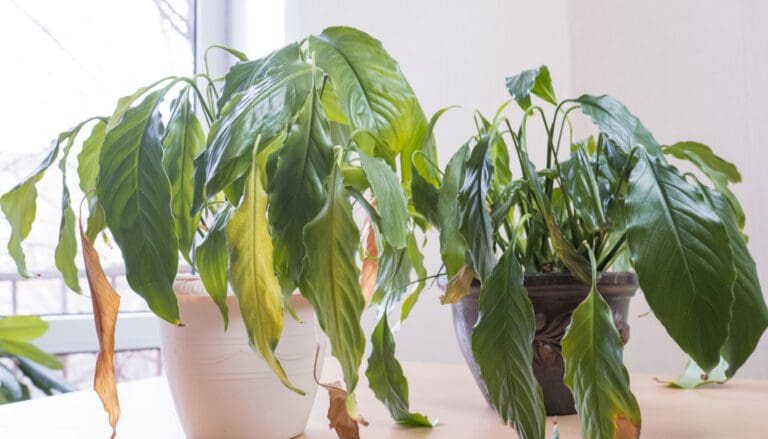
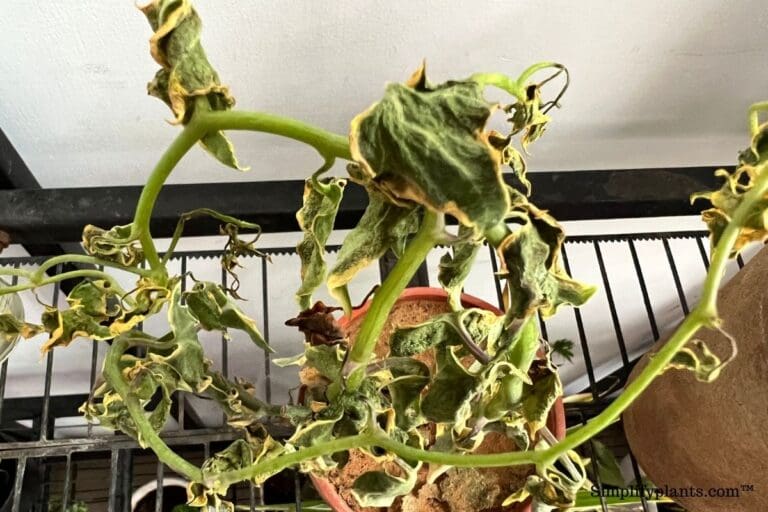



I appreciate your work , thanks for all the informative blog posts.
Hey Lindsey,
Thanks for going through and leaving a comment.
Thank you for this interesting information! As a physician, I certainly understand stress, but am curious how quickly low temperatures can adversely affect a Peace lily?
Can a few hours of temperature one night below 40 degrees F cause significant harm? I certainly understand that temperatures below 32 degrees F long enough to freeze the water inside the leaves would be detrimental in that cells would be killed, but how does the damage occur above the freezing temperature?
Hello!
As a physician, you’ll appreciate that Peace lilies, like us, can experience stress from less-than-ideal conditions. A few hours below 40°F can indeed stress them, leading to wilting or blackening leaves. While it’s not as immediately catastrophic as freezing, cold temperatures can slow down their metabolism, leading to reduced water uptake and potential cell damage. It’s best to keep them in their comfort zone, above 45°F, to avoid any chilly setbacks.
Keep that Peace lily cozy and it’ll thank you with its lush beauty! 🌱🌡️